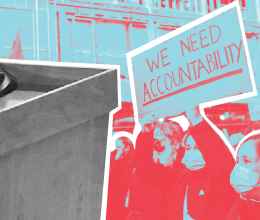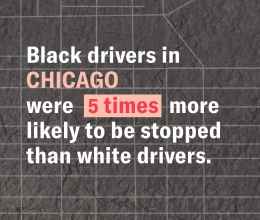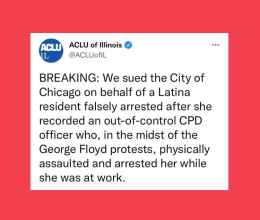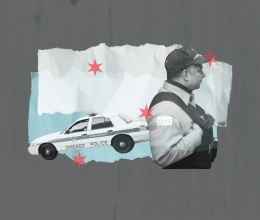
A new academic article contorts facts and statistics to claim that a consultant’s review of documentation regarding police stop-and-frisks of pedestrians caused murders in Chicago.
In late 2015 and early 2016, the volume of stop-and-frisks conducted by the Chicago Police Department (CPD) fell dramatically. In 2016, the rate of murders in Chicago rose dramatically. Paul Cassell - a Utah professor who has dedicated his career to slamming the requirement that officers give Miranda warnings - has written an article arguing that an ACLU agreement requiring a consultant to review pedestrian stops and frisks in Chicago caused the CPD to stop and frisk less people, which in turn caused the city’s 2016 increase in homicides.
Cassell and his co-author, Richard Fowles, make this claim even though the CPD-ACLU agreement did not impose any new constraints on streets stops—it solely required explanation after they occurred. They also make this argument even though similar declines in stops in New York and Seattle were not followed by spikes in homicides, and despite the fact that their analysis does not test for whether other major events had an impact, such as the late 2015 release of the Laquan McDonald video showing that official accounts of his killing had been false.
The article is a repackaged version of the hateful rhetoric that Black and Latino people should be subjected to unconstitutional and abusive policing and the absurd suggestion that police officers will be too scared to do their jobs if they have oversight. The ACLU rejects these premises, which ignore the context of policing and crime in Chicago, insult officers who follow the law, and downplay the harms of unlawful policing.
The article’s “findings” quickly fall apart upon inspection. The statistical analysis does not explain why other cities have undergone similar adjustments to stop-and-frisk without “causing” an increase in homicides. The CPD-ACLU agreement largely tracks a state law that also took effect in January 2016, which requires police statewide to document stops that result in a frisk, ticket, or arrest. Other cities in Illinois, which also had to collect additional data beginning in January 2016, did not experience an increase in murder rates in 2016. Likewise, other cities throughout the country, including New York and Seattle, have required oversight of stops, resulting in fewer stops, and without homicide increases.
The authors similarly fail to grapple with significant events that coincided with the data they used. Beginning in November and December 2015:
- the state budget impasse was starving not-for-profits serving communities in Chicago (which are already starved for resources),
- the City released the video tape showing the police murdering Laquan MacDonald and proving that official reports of his death were false,
- the Mayor publicly admitted the CPD has a code of silence,
- the Mayor fired Garry McCarthy as police superintendent,
- the Mayor announced a new Task Force would investigate the CPD, and
- the U.S. Department of Justice announced that it was opening an investigation into the CPD.
Cassell and Fowler’s analysis does nothing to test whether these major events, or other unidentified factors, caused the police to perform fewer stops or caused Chicagoans to commit more murders. Instead, their math begins and ends by focusing on the drop in pedestrian stops, and only tests for correlation, not causation.
Cassell and Fowler suggest that the CPD stopped fewer pedestrians because officers found it difficult to complete the longer form afterwards, and blames the ACLU for the length of the form. This rushed reasoning is not supported by the facts. The CPD performed fewer stops beginning in December 2015—a month before the extra data collection began. Furthermore, half of the CPD form collects information not required by state law or the CPD-ACLU agreement. The ACLU would prefer that the CPD not collect some of this information—for example, information about people’s schools and employment. If the length of the form were problematic, then the CPD could shorten its form - the majority of it is not dictated by the CPD-ACLU agreement.
In their haste to create a connection between the CPD-ACLU agreement and the homicide rate, the authors also completely overlook an entire category of police activity that is not affected by the agreement: vehicle stops. The article therefore fails to consider the total number of stops in 2016, when the police shifted from stopping pedestrians to making more traffic stops. While pedestrian stops decreased, traffic stops doubled from approximately 86,000 in 2015 to 190,000 in 2016. This publicly available data was not mentioned, or used in the statistical analysis, in the article.
Before the CPD-ACLU agreement went into effect, the CPD stopped pedestrians at record-high levels and fully half of these stops were unconstitutional. Nothing in the agreement prevents the CPD from making lawful stops, and officers have continued to stop pedestrians.
In the coming years, the CPD will need oversight and reform to improve policing, restore community trust, and increase public safety. The DOJ’s 2017 report exposed failures in the CPD’s supervision, training and oversight of officers, as well as in community policing. It highlighted our City’s dismal clearance rate for murders and other crimes. Another ACLU lawsuit shows that the CPD has been operating without a deployment or workload plan for years. Departments that fail to supervise officers or engage in constitutional policing often suffer in other ways as well.
These kind of reforms often face resistance from entrenched political interests and disgruntled officers, who do not want scrutiny. Reforms provide opportunities for talking heads to air controversial opinions to garner media attention. But the grumbling of a few should not delay us as we move forward: Not only is police reform compatible with public safety, but meaningful oversight of police is the only path to legitimate, effective policing in Chicago.



